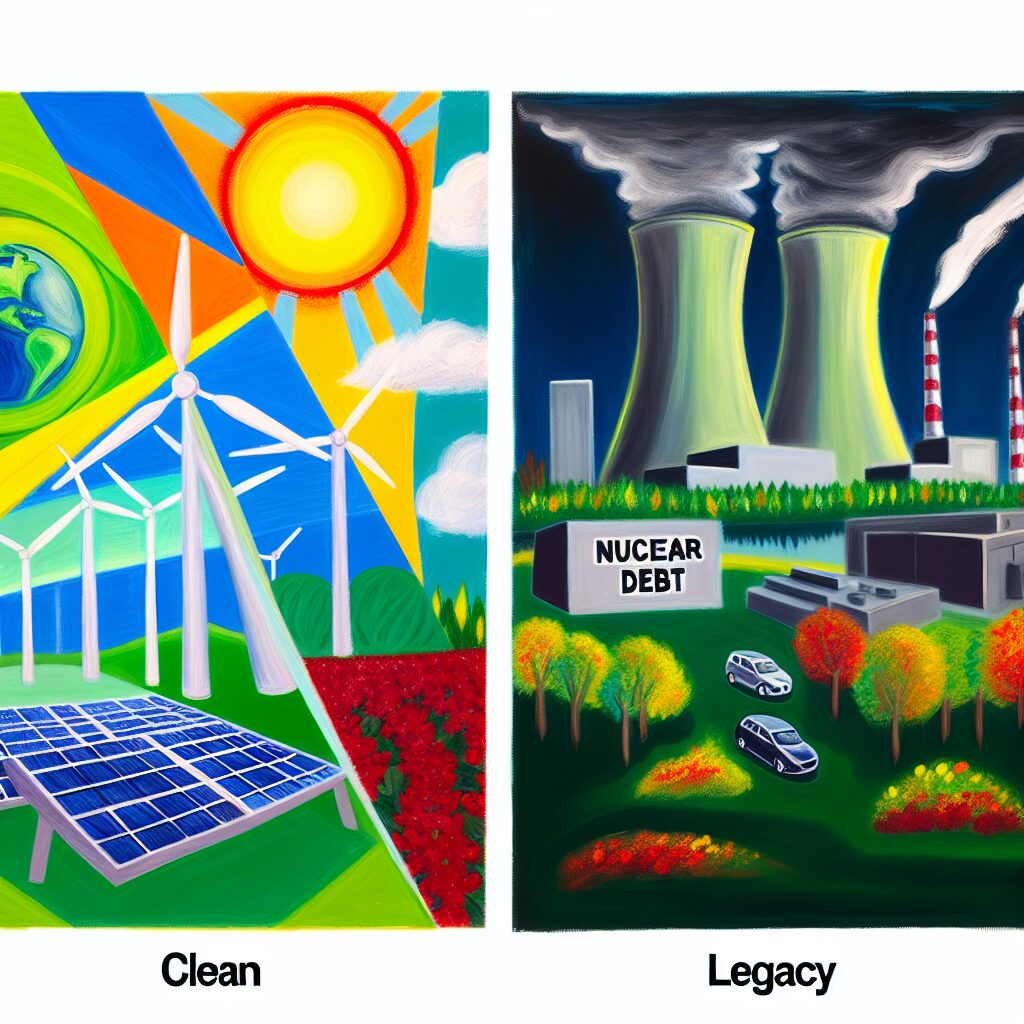Canada’s Energy Dilemma: Clean Future vs. Nuclear Debt Legacy
Canada stands at a crossroads in its energy policy, grappling with the critical decision of transitioning to a cleaner, sustainable future versus managing the lingering financial burdens of its nuclear past. This dilemma is shaping the national discourse, with implications that extend far beyond the present moment.
A Push for Renewable Energy
Canada’s ambition to lead in the arena of clean energy is evident. Bolstered by its vast natural resources, the country has the potential to become a global powerhouse in renewable energy. Solar, wind, hydroelectric, and even tidal energy offer promising avenues to reduce carbon emissions and foster an environmentally sustainable economy.
Government initiatives and public sentiment are increasingly leaning towards green energy solutions. Policies aimed at reducing greenhouse gas emissions, subsidies for renewable energy projects, and international commitments like the Paris Agreement underscore Canada’s dedication to combat climate change. Transitioning to a clean energy future not only aligns with global sustainability goals but also promises to create new jobs and economic opportunities in emerging sectors.
The Nuclear Energy Conundrum
Despite the optimistic outlook for renewables, Canada’s energy landscape is entangled with the legacy of nuclear power. Historically, nuclear energy has played a significant role in meeting the country’s electricity needs. While it offers a low-carbon alternative to fossil fuels, the financial liabilities tied to nuclear energy are substantial.
Canada faces the complex issue of managing existing nuclear facilities, some of which are nearing the end of their operational lives. Decommissioning old reactors and managing nuclear waste are costly endeavors that place considerable strain on public finances. The financial legacy of nuclear debt, accrued over decades, remains a significant concern for policymakers and taxpayers alike.
The Financial Balance
Balancing the budget between investing in new renewable technologies and addressing the nuclear debt is a tightrope walk. The Canadian government must navigate the delicate task of financing the decommissioning of outdated nuclear plants while ensuring sufficient investment in clean energy infrastructure.
This financial balancing act requires not only foresight but also innovative funding mechanisms. Public-private partnerships, green bonds, and international cooperation could offer viable solutions to bridge the funding gap. However, the challenge lies in executing these strategies efficiently and transparently, ensuring that future generations do not inherit insurmountable debt.
Public and Political Will
Public opinion and political will are pivotal in determining the direction of Canada’s energy policy. Surveys indicate growing support among Canadians for renewable energy investments, driven by increasing awareness of climate change and environmental sustainability. Politicians, in turn, are responding to this shift in public sentiment, proposing policies that favor green energy transitions.
However, the nuclear energy sector has its advocates, arguing that completely phasing out nuclear power is neither feasible nor prudent in the short term. They emphasize the role of nuclear energy in providing reliable, low-carbon electricity and caution against an over-reliance on the still-developing renewable energy technologies.
The Path Forward
Finding a pathway that reconciles the need for clean energy with the realities of nuclear debt is no small feat. A multifaceted approach that includes a mix of energy sources, robust financial planning, and strategic policymaking appears to be the most pragmatic solution.
Investing in research and development to improve the efficiency and viability of renewable technologies is crucial. Concurrently, a phased, well-funded plan for decommissioning nuclear facilities must be implemented to mitigate the financial burden.
Collaboration between federal and provincial governments, industry stakeholders, and the public will be essential in crafting a sustainable and financially responsible energy strategy. Transparent communication and inclusive policymaking processes can help build consensus and ensure that all voices are heard in this critical debate.
Conclusion
Canada’s energy dilemma is a defining issue of our time, encapsulating the broader challenges of transitioning to a sustainable future while managing the legacies of past decisions. The choices made today will ripple through future generations, shaping not only the country’s energy landscape but also its economic and environmental health.
As Canada navigates this complex terrain, the hope is that a balanced, forward-thinking approach will emerge, one that honors the commitment to a clean future while responsibly addressing the nuclear debt legacy.
Source
https://www.hilltimes.com/story/2024/08/01/canadas-future-generations-affordable-clean-energy-vs-legacy-nuclear-debt/429822/

